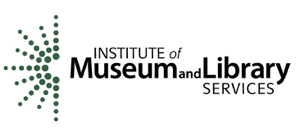Summary and Schedule
This lesson is the final lesson of the Curating for Reproduciblity curriculum. Previous lessons, (Lesson 1: Introduction to Curating for Reproducibility, Lesson 2: Curating for Reproducibility Workflows, and Lesson 3: Assessing Reproducibility), defined the object of curating for reproducibilty as the research compendium,* which undergoes a rigorous data quality review process that involves file, documentation, data, and code review. This data quality review supports reproducibilty of published scientific findings.
Final curating for reproducibilty activities center on assembling and sharing the compendium to allow the scientific community and its stakeholders to access and resuse it. The goal of this lesson is to give learners an understanding of the process of packaging and publishing research compendium materials, and the issues that require careful consideration during this process.

The CuRe Curriculum was made possible in part by the Institute of Museum and Library
Services under grants RE-87-17-0074-17 and
RE-36-19-0081-19. The Institute of Museum and Library Services
is the primary source of federal support for the nation’s libraries and
museums. We advance, support, and empower America’s museums, libraries,
and related organizations through grantmaking, research, and policy
development. Our vision is a nation where museums and libraries work
together to transform the lives of individuals and communities. To learn
more, visit www.imls.gov and follow
us on Facebook and Twitter.
{% comment %} This is a comment in Liquid {% endcomment %}
Prerequisites
While this lesson has no prerequisites, completion of previous lessons in the Curation for Reproducibility Curriculum (Lesson 1: Introduction to Curation for Reproducibility, Lesson 2: Curating for Reproducibility Workflows, and Lesson 3: Assessing Reproducibility) is highly recommended prior to starting this lesson.
| Setup Instructions | Download files required for the lesson | |
| Duration: 00h 00m | 1. Compendium Packaging |
Why is it important to package research artifacts into a
compendium? What are best practices for packaging files into the research compendium? How does the TIER Protocol help with compendium packaging? |
| Duration: 00h 00m | 2. Terms of Use |
Why is it important to define acceptable uses of the research
compendium? What is the best way to communicate acceptable uses of the research compendium? How do I determine which type of license to apply to my compendium materials? |
| Duration: 00h 00m | 3. Trustworthy Repositories |
What is a “trustworthy” repository? What are the broad types of repositories? How can you locate a trustworthy repository for your data? What are things to consider as you decide on a repository? |
| Duration: 00h 00m | 4. Special Cases |
What are some special cases to consider when publishing data and
compendium packages? What are examples of restricted and proprietary materials in compendium packages? What are examples of complex computing research outputs that may be included in compendium packages? How can researchers balance reproducibility goals with proper handling of restricted and proprietary materials in compendium packages? |
| Duration: 00h 00m | Finish |
The actual schedule may vary slightly depending on the topics and exercises chosen by the instructor.
FIXME
